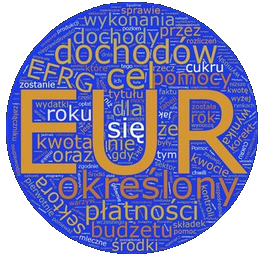Findings
The European Union (EU)
is a supranational organisation which uses 24 official languages. Polish has been one of the EU official languages since Poland’s accession to the EU in 2004. Our project investigated the Polish Eurolect, that is an EU variety of Polish used by European institutions. It has emerged as a result of multilingualism and in order to address the European Union linguistic needs as a supranational organisation. This variety is mediated through and shaped by translators to a large extend. The Eurolect has 24 parallel ‘mirror’ realisations in EU languages and is influenced by main working languages — English and French. As a result, Eurolects differ from the language used by domestic institutions.
For the purposes of the NCN-funded project we formed an interdisciplinary research team comprising linguists, translation scholars and a legal scholar. The team investigated mechanisms of Eurolect formation, its changes over time, distance to the national variety of administrative Polish and impact on domestic Polish. In order to conduct the study we built large electronic corpora of texts from the years 2011-2015: over 4000 EU texts (15 million words) in Polish together with corresponding English texts and over 4000 texts (12 million words) of domestic institutions. They represented four important genres of administrative texts: legal acts, judgments, administrative reports and institutional websites for citizens. The corpora were studied with a dedicated software by comparing EU texts with domestic texts.
We carried out the first such comprehensive study
into the Polish Eurolect. We confirmed the existence of the EU variety of administrative language for each genre, yet of varied degrees of Europeanisation. While legal acts and judgments are more foreignised, reports and websites tend to be more domesticated. Although compared to the pre-accession stage (1999-2003), the Polish Eurolect has evolved and has become more similar to domestic Polish, the differences are still significant. They are visible at various levels: a macrostructure, rhetoric strategies, microstructure or terminology. We can also see a strong impact of English through syntactic or lexical calques. EU texts are marked by a more impersonal style of communication; on the other hand they more frequently employ purpose and justification patterns to provide the institutional rationale. EU and domestic varieties share few n-grams, which means they overlap to a small degree only. Each Eurolect genre creates its own linguistic profile which departs from domestic conventions. It may create an impression of unnaturalness and make the processing of EU texts more challenging.
The impact of the Eurolect
on domestic Polish is most visible in the lexical (terminological) layer: post-accession texts more frequently refer to the EU context. In respect of grammatical patterns, administrative Polish, in particular its legislative and judicial genres, is subject to relatively small changes.
As part of the project, we prepared 2 doctoral dissertations and 3 master’s theses, one of which was awarded a prestigious international CIUTI prize for the best master’s thesis in the area of Translation Studies. Upon the end of the project we formed the EUMultiLingua research team in the Institute of Applied Linguistics at the University of Warsaw. We collaborate with other research centres in Europe which study Eurolects and EU translation.
Our research helps to understand how a new hybrid variety of language emerges and is shaped by translators and language contacts. Knowledge about these mechanisms may help project how a language will change and develop in the future. We also raise attention to the need to protect a national language in supranational environments. Findings about differences between the Eurolect and domestic administrative Polish may be applied in practice to improve the quality of translations and their naturalness. Our understanding of how EU and domestic institutions communicate with the general public may be applied to improve the clarity and readability of administrative texts.
Project website: https://eurolekt.ils.uw.edu.pl/
